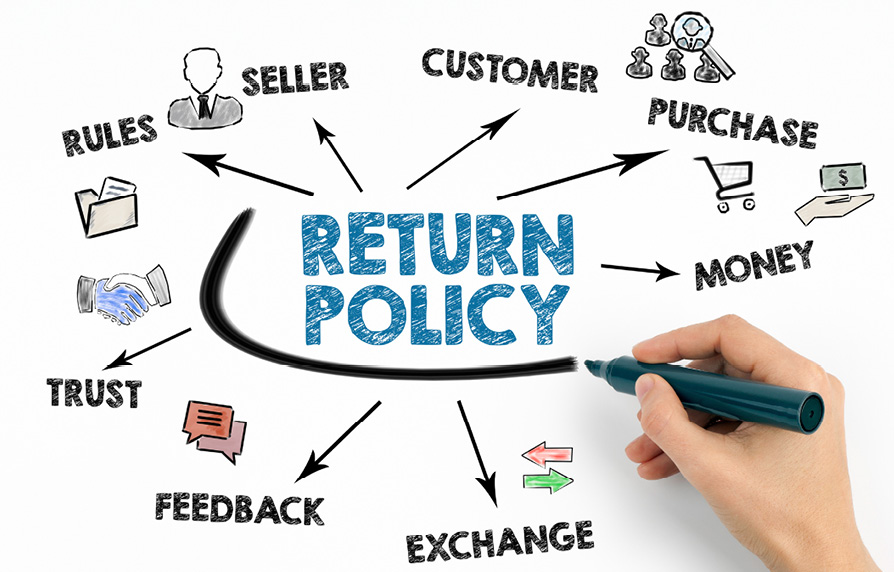The National Retail Federation acquired the Reverse Logistics Association more than a year ago. NRF, the world’s largest retail trade association, was seeking additional expertise to address two critical and related trends – growing retail returns and rising demand for circular solutions. RLA and the reverse logistics industry sit at the intersection of these and other trends that are redefining the future of retail and the broader economy. The trends are reshaping the future in ways that will be as transformative as the internet, e-commerce, social media and artificial intelligence combined.
Retail returns more than doubled during the pandemic, according to a recent report by NRF and Happy Returns, from around 8 percent of sales in 2019 to more than 16 percent today. Driven primarily by the rapid growth of online shopping, retail returns are expensive for retailers, can be frustrating for consumers, and generate additional environmental costs due to longer transportation distances and the possibility that some products cannot be resold or reused.
The pandemic also provided more people with insights into how complex, global supply networks operate. When supply chain constraints made it more challenging to obtain toilet paper, laptops and other electronics, cars and additional consumer products, company executives, consumers, investors and regulators became more aware of the financial, social and environmental risks embedded within current supply chain practices. It led to greater interest in circular solutions to reduce supply chain risks.
Circular solutions, as defined by the Ellen MacArthur Foundation, eliminate waste and pollution, regenerate nature, and keep products and materials circulating at their highest value. This involves reusing, repairing, repurposing, and reselling products multiple times, and recycling them into their component parts when they are no longer useful. It can reduce the financial and environmental costs associated with mining, growing or making new raw materials and manufacturing new products.
The potential benefits of circular solutions have led European regulators to adopt extended producer responsibility laws that create incentives for circular solutions. California recently passed SB 707, an EPR law for textiles that creates similar incentives. The reverse logistics industry can help retailers and others meet the regulatory requirements while also delivering benefits for consumers.

Customer-Focused Circularity
While not all customers or consumers are familiar with the term "circularity," there is a growing awareness of the principles behind it and the benefits they create. Executives and other decision-makers are beginning to recognize key drivers and opportunities.
1. Meeting Demand for Sustainable Products and Practices: Consumers are increasingly seeking out sustainable products and services. They prefer brands that manufacture and sell more durable products made from environmentally and socially responsible materials that can be resold or recycled when they are no longer needed.
2. Providing Resale and Secondhand Goods: The stigma around buying secondhand is diminishing. Consumers, especially younger generations, are more open to purchasing gently used or refurbished items. This trend is driven by both environmental concerns and the desire for unique, affordable products. ThredUp’s 2024 Resale Report highlights that secondhand apparel sales are growing fifteen times faster than the broader retail clothing sector, with projections reaching $350 billion by 2028. Brands like Eileen Fisher, Patagonia, and IKEA have established successful resale programs, and major retailers like Walmart and Amazon have scaled their resale operations.
3. Enabling Convenient Return Processes: Consumers expect hassle-free return processes. Efficient returns and reverse logistics processes that offer easy returns, quick refunds, proper refurbishing, reselling, donating or recycling of products, and transparent communication are highly valued. Brands that provide clear information about their sustainability efforts and reverse logistics processes tend to build stronger trust and loyalty.
4. Making Recycling Easier: Consumers are seeking ways to recycle products that they cannot recycle at home and retailers are responding. Staples, for example, offers free recycling for over fifty categories of office equipment and supplies. Best Buy allows consumers to recycle up to three items per household per day, including electronics and appliances. Retailers like H&M and Sephora have also implemented recycling programs for clothing and beauty product containers.
5. Adopting Technology for Enhanced Experiences: Consumers appreciate the use of technology to improve their shopping and return experiences. Innovations like AI-driven customer service, automated return kiosks, and real-time tracking of returned items enhance convenience and satisfaction.

Whether driven by financial, regulatory or sustainability reasons, circularity is becoming a priority for retailers and manufacturers. With reverse logistics as the backbone of circularity, the reverse logistics industry has never been so important to so many people in so many ways. We have plenty of work to do to make the industry more efficient, more successful and more profitable. Working together with RLA’s new home at NRF, we will make it happen.
1. https://cf-assets-tup.thredup.com/resale_report/2024/ThredUp_2024_ Resale%20Report.pdf